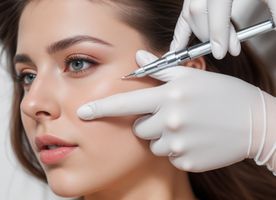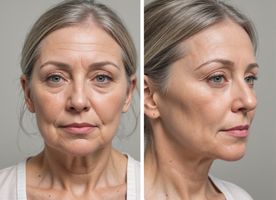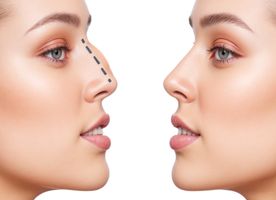Eye Bag Removal in Valencia
Search and Compare the Best Clinics and Doctors at the Lowest Prices for Eye Bag Removal in Valencia


























































































































































No Time?
Tell us what you're looking for and we'll reach out to the top clinics all at once
What does the Procedure Involve?
There are several surgical techniques available to remove the eye bags. The technique used depends on your goals, as well as your anatomy.
Before the procedure, your surgeon will mark your lower eyelids to help them know where to make incisions. Then, you will be given either general or local anesthetic. With general anesthesia, you will be asleep throughout the procedure, while with local anesthesia, only the affected area is numbed.
Your surgeon will begin to create incisions. The location of the incision will depend on the technique used:
-
Traditional blepharoplasty involves creating an incision just under the eyelashes. Then the fat is extracted from the lower lid and some excess skin is removed.
-
Transconjunctival blepharoplasty involves an instrument called electrocautery to create a cut inside your lower eyelid instead of the regular incision outside.
-
Pinch blepharoplasty involves extracting fat through the inside of your eyelid. Then, a “pinch” of skin from the area is removed.
-
Canthopexy is the simplest way to eliminate eye bags. This procedure involves tightening the lower eyelid and elevating its position.
How Long Should I Stay in Valencia?
Eye bag removal is performed as an outpatient procedure, so you can leave the hospital on the same day. However, you should plan to stay in Valencia for at least 7 days for initial recovery and to attend follow-up checkups as your surgeon will monitor your healing throughout these appointments. Your stitches will also be removed during one of these visits, usually within 5 to 7 days following the surgery.
What's the Recovery Time?
You should be able to return to most of your normal activities, including work, within 5-7 days following your eye bag removal surgery. However, any strenuous activities, such as working out and heavy lifting, should be avoided for around one month.
What About Aftercare?
Your surgeon will give you aftercare instructions on how to care for yourself after eye bag removal. These usually include:
-
Rest with your head elevated and use ice packs or compresses on the affected area to reduce swelling.
-
Ensure to keep your incisions clean by gently washing them. Wash your hands before you touch or go near the incisions. These will reduce the risk of infection.
-
Wear darkly tinted sunglasses to protect your eyes as your skin heals.
-
Avoid direct exposure to the sun during your recovery period.
-
Avoid any activities that may dry up your eyes, such as reading, watching television, or using your phone for too long.
-
For the first couple of days, eat soft and chewable foods.
-
Stay hydrated by drinking plenty of water.
-
Only take the medication prescribed for you. If you do need to take other drugs, such as aspirin, consult your doctor first.
-
See your doctor immediately if you experience bleeding, skin that feels hot to the touch, fever, and pain that worsens over time.
Remember, following your surgeon’s aftercare instructions is essential to achieve and maintain the optimal results.
What's the Success Rate?
Eye bag removal is safe and effective and the results look very natural.’ However, you need to be aware that all surgical procedures carry possible risks and side effects. For eye bag removal, the potential risks include double vision, bleeding, cyst on the area where the skin was sewn together, drooping upper eyelid, necrosis, excessive muscle removal, infection, skin discoloration, vision loss, and numbness.
Are there Alternatives to Eye Bag Removal?
The two main alternatives to this procedure are:
-
Dermal fillers – Dermal fillers are sometimes used to improve the look of the under-eye area. However, you need to be aware that dermal fillers are not FDA-approved to be used for under eye issues.
Laser skin resurfacing – this procedure involves the use of lasers, such as Erbium Yag lasers or CO2 to tighten the skin under the eyes. Although it is effective and less invasive, those with dark skin tones are not recommended to try this procedure as the laser can cause discoloration on highly pigmented skin.
This information has been accurately sourced and verified by a medical professional for its accuracy, however, we strongly recommend you to consult with your doctor before pursuing medical procedures overseas.


